Freight Shipping between Thailand and Finland | Rates – Transit times – Duties and Taxes
Relax, you're not alone in confusing 'sauna' with a 'shipment' when shipping goods from Thailand to Finland! This guide is your go-to resource with easy-to-understand explanations on complex issues such as transit times, understanding various rates, and comprehending the labyrinth-like customs regulations. Here, you'll discover the different freight options, unravel the mysteries of customs clearance, and gain a comprehensive understanding of duties, taxes, complete with hand-on advice for your specific business needs. If the process still feels overwhelming, let DocShipper handle it for you! We're international freight forwarders who transform every step of the shipping process from a challenge into a triumphant success for your business.
Which are the different modes of transportation between Thailand and Finland?
Thailand to Finland - an intriguing route with a buffet of transportation methods. With over 8,000 kilometers between them, air freight provides rapid delivery but carries a higher price tag. Ocean freight, on the other hand, is the tortoise in this race - slow but consistent, and friendly to your wallet. Land travel? It's quite a trek with countless borders to cross, let's be honest. Choosing the right mode, akin to picking between a bullet train and a cargo bike, depends on your needs - speed, quantity, or cost. The choice, as they say, is yours!
Need help with your shipment?
Need assistance with your shipment? Dont hesitate to contact us even for a simple question. Choose the option that suits you
Live chat with an expert Chat on WhatsApp Free Quote 24hHow can Siam Shipping help you

Sea freight between Thailand and Finland
Prepare to lift the veil on ocean shipping from Thailand to Finland, a trade route that acts as a bridge between Bangkok’s bustling markets and Finland’s key industrial centers. The primary ports? Think Laem Chabang in Thailand and Kotka in Finland, lifelines connecting these two economic powerhouses. Beyond its role as a trade corridor, sea freight is your ally for transporting bulky loads. It may not win the race against time but it sure does offer a pocket-friendly alternative for high-volume goods.
Now, here’s where the water gets a bit choppy. From customs clearance to administrative complexities, ocean shipping between these two countries can feel like solving a Rubik’s cube while on a roller coaster. Businesses often stumble through the nuances, making mistakes that could be sidestepped with the right guidance. In this guide, we’re about to reveal the road map for effective and efficient shipping. No more fumbling in the dark – simply follow our lead to transform your shipping experience!
Main shipping ports in Thailand
Laem Chabang Port
Located on the Gulf of Thailand, the Laem Chabang Port is the busiest port in Thailand, handling over 7.2 million TEU annually. It serves as a crucial gateway for exports to key global economies, including China, Japan, and the United States. From industrial machinery to electronic devices, a wide range of goods flow through the port.
Key Trading Partners and Strategic Importance: This port plays a vital role in trade with China, Japan, and the USA. It also has a strategic alliance with Yokohama Port in Japan to foster closer business ties and port development.
Context for Businesses: If you’re planning to expand into Asian markets or want to leverage Thailand’s thriving electronics industry for your supply chain, consider Laem Chabang Port for its high volume capacity.
Bangkok Port
Situated on the Chao Phraya River, Bangkok Port is the second largest port in Thailand, handling nearly 1.5 million TEU annually. Apart from its strategic location in the capital city, it has the unique advantage of being connected to the country’s vast inland waterways network.
Key Trading Partners and Strategic Importance: Bangkok Port’s main trading partners are ASEAN countries, China, and Japan. Its location makes it strategically important for domestic distribution and regional trade.
Context for Businesses: If your business operates in or ships to the inner regions of Thailand, Bangkok Port’s connectivity with inland waterways could simplify your goods’ journey.
Map Ta Phut Port
Map Ta Phut Port, based in Rayong, is Thailand’s largest industrial port. It specializes in the handling of industrial products such as chemical and petroleum products, and has a throughput of about 4 million TEU.
Key Trading Partners and Strategic Importance: Map Ta Phut Port’s primary trading partners include China, Singapore, and Japan. Its strategic significance lies in servicing the Eastern Economic Corridor (EEC), Thailand’s major industrial region.
Context for Businesses: If you’re a player in the chemical or petroleum industry, Map Ta Phut’s specialized handling facilities could be critical to your logistics strategy.
Main shipping ports in Thailand
Laem Chabang Port
Located on the Gulf of Thailand, the Laem Chabang Port is the busiest port in Thailand, handling over 7.2 million TEU annually. It serves as a crucial gateway for exports to key global economies, including China, Japan, and the United States. From industrial machinery to electronic devices, a wide range of goods flow through the port.
Key Trading Partners and Strategic Importance: This port plays a vital role in trade with China, Japan, and the USA. It also has a strategic alliance with Yokohama Port in Japan to foster closer business ties and port development.
Context for Businesses: If you’re planning to expand into Asian markets or want to leverage Thailand’s thriving electronics industry for your supply chain, consider Laem Chabang Port for its high volume capacity.
Bangkok Port
Situated on the Chao Phraya River, Bangkok Port is the second largest port in Thailand, handling nearly 1.5 million TEU annually. Apart from its strategic location in the capital city, it has the unique advantage of being connected to the country’s vast inland waterways network.
Key Trading Partners and Strategic Importance: Bangkok Port’s main trading partners are ASEAN countries, China, and Japan. Its location makes it strategically important for domestic distribution and regional trade.
Context for Businesses: If your business operates in or ships to the inner regions of Thailand, Bangkok Port’s connectivity with inland waterways could simplify your goods’ journey.
Map Ta Phut Port
Map Ta Phut Port, based in Rayong, is Thailand’s largest industrial port. It specializes in the handling of industrial products such as chemical and petroleum products, and has a throughput of about 4 million TEU.
Key Trading Partners and Strategic Importance: Map Ta Phut Port’s primary trading partners include China, Singapore, and Japan. Its strategic significance lies in servicing the Eastern Economic Corridor (EEC), Thailand’s major industrial region.
Context for Businesses: If you’re a player in the chemical or petroleum industry, Map Ta Phut’s specialized handling facilities could be critical to your logistics strategy.
Main shipping ports in Finland
Port of Helsinki
Location and Volume: Strategically situated at the southern edge of Finland, the Port of Helsinki is the busiest passenger port in Europe, handling over 14 million passengers annually. Alongside this crucial role, it also plays a key part in freight transport, handling over 14.7 million tonnes of cargo each year.
Key Trading Partners and Strategic Importance: The Port of Helsinki interfaces with critical trading partners such as Germany, Russia, Sweden, and Estonia. As Finland’s main freight and passenger port, its strategic importance is palpable. It connects Finland to numerous European countries, playing a key role in regional and international trade and transportation.
Context for Businesses: For businesses keen on penetrating the European and Russian markets, the Port of Helsinki presents a pivotal logistics hub. Its high shipping volume and extensive reach make it ideal for any touch points in these regions.
Port of Kotka-Hamina
Location and Volume: Located on the eastern Gulf of Finland, the joint entity of the Port of Kotka-Hamina handles over 10.4 million tonnes of cargo annually.
Key Trading Partners and Strategic Importance: The Port holds significant strategic value given its proximity to Russia, serving as a vital gateway to the Finnish market for Russian imports. Key trading partners also include the Netherlands, Germany, and the United Kingdom.
Context for Businesses: If you’re aiming to capitalize on opportunities in the Russian or North European market, consider incorporating Port of Kotka-Hamina in your shipping strategy. Its connections with key European countries coupled with its strategic geographic location provide an extensive network for businesses to leverage.
Port of Turku
Location and Volume: Sitting on the southwestern coast of Finland, the Port of Turku deals with around 4.1 million tonnes of freight each year.
Key Trading Partners and Strategic Importance: Turku has a strong maritime relationship with Sweden and the Baltic countries. Its strategic importance lies in its placement along the ‘Motorways of the Baltic Sea’ – a crucial shipping route across Baltic Sea countries.
Context for Businesses: For businesses with a foothold or interest in the Baltic region, the Port of Turku is an asset worth including in your logistics plan. Its strategic location and connections with the Baltic countries make it highly advantageous for such businesses.
Port of Oulu
Location and Volume: The Port of Oulu, located in the northern part of Finland, handles about 3.5 million tonnes of cargo annually.
Key Trading Partners and Strategic Importance: Oulu interacts with countries such as the Netherlands, Sweden, and Russia. Its strategic value stems from its position as Northern Finland’s most important export port and its breadth of freight handling, including bulk and container cargo.
Context for Businesses: If your business involves significant operations or interests in Northern Europe, incorporating the Port of Oulu into your logistics chain should be a key consideration, given its operational versatility and geostrategic position.
Should I choose FCL or LCL when shipping between Thailand and Finland?
Sea freight between Thailand and Finland, but unsure if Full Container Load (FCL) or Less than Container Load (LCL), also known as consolidation, is the right fit? Making this decision is a key strategic move, significantly affecting your cost, delivery time, and overall shipping success. In this section, we’ll demystify these two options, helping you to better understand their unique characteristics and how they can align with your specific shipping needs. Prepare to unlock the most optimal and cost-effective solutions for your business.
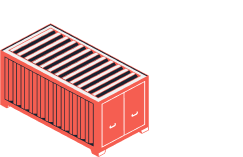
Full container load (FCL)
Definition: FCL, or Full Container Load, refers to ocean freight where you book an entire container, such as a 20'ft or 40'ft container. When to Use: FCL shipping is best when your cargo is more than 13, 14, or 15 CBM. This method not only brings cost efficiency for high volume shipments but also provides safety as the FCL container is sealed from origin to destination. Example: For instance, a furniture manufacturer in Thailand shipping a large batch of chairs to a distributor in Finland might opt for FCL. The high volume fills up a whole container, making it a reliable and cost-effective choice. Cost Implications: Though FCL can seem more expensive upfront, the cost per unit is drastically lower for larger volume shipments. Additionally, you can get a more predictable FCL shipping quote, as the cost doesn't fluctuate based on the freight volume within the industry, like LCL. Hence, you can maintain control over your budget while ensuring the safety of your goods.
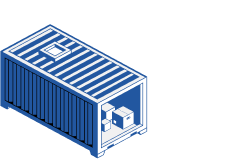
Less container load (LCL)
Definition: LCL (Less than Container Load) shipping is the transportation of smaller cargo volumes that do not require a full container. This service groups your goods with other shipments heading to the same destination, optimizing use of space and costs. When to Use: It's particularly beneficial for businesses shipping cargo less than 13/14/15 CBM. For instance, if you're an artisanal crafts retailer with irregular or infrequent shipping schedules, LCL is ideal for you as it offers flexibility and cost-effectiveness. Example: Let's assume you're shipping a few crates of handcrafted wooden furniture from Thailand to Finland. Given the relatively small volume, booking a full container would result in a lot of wasted space. An LCL arrangement would ensure your goods get transported promptly without the added cost of an unused, full container. Cost Implications: Instead of paying for a full container, you pay only for the actual space utilized by your cargo in a shared container in an LCL shipment. This makes LCL freight a considerably more affordable option for smaller cargos or for businesses looking to manage their budget more closely. This lcl shipping quote can dramatically reduce your overall shipping expenses.
Hassle-free shipping
Unravel the complexities of cargo shipping with DocShipper, your reliable freight forwarder. Our ocean freight experts are on hand to guide you in choosing between consolidation or full container shipping, factoring in budget, time constraints, and the specific nature of your goods. We aim to make the process hassle-free and attuned to your business needs. Isn't it time to simplify your shipping? Reach out to us now for a free estimation!
How long does sea freight take between Thailand and Finland?
Sea freight shipping from Thailand to Finland typically takes roughly 30-48 days. These transit times are calculated considering various elements such as ports of loading and discharge, weight, and the nature of cargo. For a more personalized and precise quotation, it’s advised to reach out to a reliable freight forwarder like DocShipper.
Ports in Thailand Ports in Finland Average Transit Time (Days) Port of Laem Chabang Port of Helsinki 47 Port of Bangkok Port of Turku 48 Port of Si Racha Port of Hanko 47 Port of Sattahip Port of Oulu 45*Remember, these are just average estimates. Exact shipping times may vary.
How much does it cost to ship a container between Thailand and Finland?
Shifting containers between Thailand and Finland may leave you wondering about ocean freight rates. However, an exact shipping cost estimation may resemble a wild goose chase due to multiple volatile and variable factors. From your Point of Loading to Destination, the carrier selection, nature of goods, and yes, even the whims of monthly market fluctuations, all play their part.
But worry not! Our adept shipping specialists master the art of dealing with this complex concoction. They work painstakingly, determining rates on a bespoke, case-by-case basis, striving to craft the most reasonable, cost-effective solution for your shipping endeavors. Sit back, we’ve got your shipping concerns covered.
Special transportation services
Out of Gauge (OOG) Container
Definition: Out of Gauge containers, often known as OOG containers, are designed to fit larger, non-standard size items. These containers are suitable for materials that don’t fit into traditional shipping boxes due to their height, width, or length. Suitable for: Large machinery, industrial equipment, and other awkwardly shaped or oversized items. Examples: Construction machinery, power generators, windmill props or other items that exceed the dimensions of standard containers. Why it might be the best choice for you: If your business specializes in large scale industrial equipment or oversized machinery, the OOG containers offer an ideal solution while shipping from Thailand to Finland.
Break Bulk
Definition: Break Bulk handling is the go-to method to transport goods that are uncontained, not enclosed by a shipping container and cannot be transferred in a box or on a flat rack. Instead, individual items are loaded directly onto the vessel. Suitable for: Large items that are too big for conventional containers such as construction materials, or industrial equipment. Examples: Piles of timber, steel trusses, or large boats. Why it might be the best choice for you: If your items are larger than what an Out of Gauge cargo can accommodate, opting for break bulk is the ideal choice. It’s most commonly chosen for particularly large, heavy or awkwardly shaped items.
Dry Bulk
Definition: Dry Bulk refers to loose cargo load that is shipped in large quantities, including non-packaged, unpacked goods such as grain or coal, placed directly into the hold of a ship. Suitable for: Bulk goods such as minerals, grains, or construction materials. Examples: Agriculture products like rice or grains, coal or cement. Why it might be the best choice for you: If you’re sending large quantities of unprocessed, granulated or particulate products to Finland from Thailand, Dry Bulk shipping is the logical choice.
Roll-on/Roll-off (Ro-Ro)
Definition: Ro-Ro vessels are an ideal mode of sea transport for wheeled vehicles. Roll-on/Roll-off, or more familiarly known as Ro-Ro, indicates that the cars, buses, trucks, semis, and other vehicles are simply rolled on and off the ship and the vessel itself is essentially a floating parking garage. Suitable for: Cars, trucks, semi-trailer trucks, trailers, and railroad cars; basically anything that rolls on wheels. Examples: New and used automobiles, buses, manufacturing machinery on wheels, or construction vehicles. Why it might be the best choice for you: If your business has heavy vehicles or wheel-based equipment to ship from Thailand to Finland, Ro-Ro shipping is your best bet for uncomplicated and safe transport.
Reefer Containers
Definition: Reefer containers, or refrigerated containers, are a type of shipping container used to transport temperature-sensitive goods. These containers maintain a steady temperature, keeping the goods fresh throughout the journey. Suitable for: Foods, medicines, or other goods that need to be kept at specific temperatures. Examples: Perishable goods such as fruits, vegetables, fish, dairy products, or pharmaceutical products. Why it might be the best choice for you: If the commodities you’re exporting require a controlled temperature environment while on the journey from Thailand to Finland, Reefer Containers are definitely a viable option.
If your business is looking for the best fitting solution for your shipping needs, DocShipper is here to assist you in every step of the way. From better understanding the load types to providing an end-to-end service, we’ve got you covered. Contact us today and get a free shipping quote in less than 24 hours. We make international shipping easy.

Air freight between Thailand and Finland
Air freight transport between Thailand and Finland is nothing less than the ‘express train’ of international shipping. Designed for small, valuable goods, like fresh fruit or electronics, it’s about speed and reliability. Imagine the clock hand zipping around as your goods fly the friendly skies: the unparalleled pace of air freight gets your stock replenished faster than any other mode.
But while it soars in speed, the ride isn’t always smooth for shippers. You may struggle with tricky areas like cost estimation—not knowing the appropriate weight formula can lead to guesswork and overpayment. Look at it this way: it’s like ordering a custom suit but paying for the entire bolt of fabric. Other best practices are crucial too, missing out on them could be like leaving money on the runway. Up next, let’s put your shipping woes to ‘flight’ and explore more.
Air Cargo vs Express Air Freight: How should I ship?
Looking to ship your goods from Thailand to Finland? Choosing between Air Cargo and Express Air Freight can be puzzling. Put simply, Air Cargo utilizes shared airline space for your shipment, while Express Air Freight gets your items their own snappy, dedicated plane. Let’s break down these options and uncover which one is tailor-made for your business shipping needs.
Should I choose Air Cargo between Thailand and Finland?
If you’re moving sizeable goods between Thailand and Finland, air cargo should be considered. Dedicated freight airlines like Finnair and Thai Airways, provide reliable services that may align with your budget. While longer transit times due to fixed schedules might be a setback, the cost-effectiveness of this method is a significant advantage; especially for shipments over 100/150 kg (220/330 lbs), air cargo becomes increasingly appealing. Just bear in mind, every option comes with its own set of trade-offs to consider.

Should I choose Express Air Freight between Thailand and Finland?
When shipping smaller quantities, such as cargo under 1 CBM or 100/150 kg, express air freight is your go-to option. It’s a specialized service operated by firms like FedEx, UPS, or DHL, involving dedicated cargo planes without passengers. This choice ensures rapid, reliable delivery from Thailand to Finland—ideal for urgent or valuable items. For example, it would be just right for an urgent shipment of small electronics parts or high-priced Finnish glassware. Investing in express air freight might mean better security, quicker customs clearance, and, ultimately, a happier customer at the receiving end.

Main international airports in Thailand
Suvarnabhumi Airport
Cargo Volume: Handles over 1.3 million tons of cargo annually, making it one of the busiest cargo hubs in Southeast Asia. Key Trading Partners: Mainly deals in trade with China, Japan, the United States, and various European countries. Strategic Importance: As Thailand’s largest airport, it is a crucial hub for connecting to major cities worldwide. Being in Bangkok, it provides immediate access to the country’s capital and its vast consumer market. Notable Features: Equipped with modern facilities, it has a dedicated cargo terminal with a capacity to handle 3 million tons of cargo per year. It also provides 24-hour customs services. For Your Business: If your trade majorly relies on speed and you deal with high-value goods, Suvarnabhumi’s extensive global connections and advanced facilities might be an ideal fit for your shipping needs.
Don Mueang International Airport
Cargo Volume: Handles approximately 18,000 tons of cargo each year. Key Trading Partners: Primarily trades with ASEAN countries, China, and India. Strategic Importance: While smaller than Suvarnabhumi, its location in Bangkok allows for easy access to Thailand’s main consumer market. Notable Features: It has a domestic and international cargo division with capabilities to handle diverse categories of goods, including sensitive and perishable items. For Your Business: If your operations sync well with regional trades or require the shipping of specialized cargo, then Don Mueang International Airport’s services could be a viable option.
Chiang Mai International Airport
Cargo Volume: Processes around 160,000 tons of cargo yearly. Key Trading Partners: Trades with countries like China, Taiwan, Malaysia, and Singapore. Strategic Importance: It holds a crucial position in catering to the Northern Thailand region, enabling the export of local products to other countries. Notable Features: Equipped with temperature-controlled facilities to handle sensitive goods like agricultural produce and seafood. For Your Business: If your business is involved in the exporting of perishables from Northern Thailand, leveraging Chiang Mai International’s specialized facilities can be a strategic move.
Phuket International Airport
Cargo Volume: Handles over 12,000 tons annually. Key Trading Partners: Primarily trades with countries like China, Russia, and the United Arab Emirates. Strategic Importance: As the second busiest airport in Thailand, it links Southern Thailand to the global market. Notable Features: Comprises of a dedicated cargo terminal and offers handling services for all types of freight. For Your Business: If your business trades predominantly with Southern Asia or focuses on tourism-oriented commodities, then Phuket International Airport’s facilities and links might prove beneficial for you.
Hat Yai International Airport
Cargo Volume: Approximately handles around 2,000 tons of freight per year. Key Trading Partners: Mostly trades with Malaysia and Singapore. Strategic Importance: It acts as a key gateway to Southern Thailand and supports the cross-border trade with nearby Malaysian states. Notable Features: The airport houses a compact yet efficient cargo handling division. For Your Business: If reaching Southern Thai markets or the nearby Malaysian states is part of your business model, Hat Yai International Airport could be a logical choice.
Main international airports in Finland
Helsinki Airport
Cargo Volume: As Finland’s largest and busiest airport, it handled over 350,000 tonnes of cargo in 2019.
Key Trading Partners: Important trade connections include Germany, Russia, Sweden, and China.
Strategic Importance: As the main international gateway into Finland, it connects with over 130 destinations worldwide which could be crucial for your diverse business needs.
Notable Features: Renowned for its efficiency and modern infrastructure, it houses a dedicated cargo terminal for streamlined operations.
For Your Business: With its extensive global connectivity and high-tech cargo facilities, the Helsinki Airport provides a reliable, efficient hub for your cargo shipments.
Vaasa Airport
Cargo Volume: It handles a smaller volume when compared to Helsinki, but it’s still a significant regional player.
Key Trading Partners: Vaasa maintains crucial links with Sweden and Denmark.
Strategic Importance: It serves as a vital connection to western Finland and the Nordic countries, perfect for regional distribution.
Notable Features: Home to a number of freight companies, it offers flexible, tailored freight solutions.
For Your Business: Vaasa Airport could serve as a key node for your Nordic shipping needs, helping penetrate regional markets for your company’s growth.
Turku Airport
Cargo Volume: This airport facilitates a considerable volume of air freight, boasting cargo services to different continents.
Key Trading Partners: Key connections include Sweden, UK, Germany, and Belgium.
Strategic Importance: It represents an important gateway to the Turku region making it a potentially strategic location for certain industries.
Notable Features: It has a dedicated cargo terminal, and can handle wide-bodied aircrafts.
For Your Business: With wide-bodied aircraft facilities for large cargo shipments, Turku Airport provides opportunities for significant cargo transfer for expanding businesses.
Tampere-Pirkkala Airport
Cargo Volume: A mid-tier airport in terms of cargo, yet serves as a flexible transport hub.
Key Trading Partners: Long-standing trade ties primarily with Sweden and Germany.
Strategic Importance: Located in a major industrial and tech city, it provides ideal access to Finland’s southern region.
Notable Features: It has a developed network with freight forwarding companies ensuring smooth logistics.
For Your Business: Tampere-Pirkkala Airport could prove valuable to your supply chain given its solid connections to the Finnish tech industry and ease of goods transport.
Oulu Airport
Cargo Volume: As the second busiest airport in Finland, it handles a substantial volume of cargo annually.
Key Trading Partners: Predominantly linked with Sweden and Germany.
Strategic Importance: Situated in northern Finland, it serves as an important hub for the region.
Notable Features: It boasts modern facilities and network connections to key European destinations.
For Your Business: If targeting northern markets, Oulu Airport offers modern facilities and a considerable cargo volume lending your business a logistical advantage in the region.
How long does air freight take between Thailand and Finland?
Typically, shipping goods between Thailand and Finland via air freight requires an average of one to two days. However, these transit times aren’t set in stone – they can fluctuate based on a number of factors. From the specific airports used for departure and arrival, to the weight and nature of the goods in question, it’s crucial to take all these elements into account. To ensure a clear, precise estimate of the shipping duration, it’s advisable to consult an experienced freight forwarder such as DocShipper.
How much does it cost to ship a parcel between Thailand and Finland with air freight?
For air freight between Thailand and Finland, the wide average shipping rate lies between €2.50-€5.00 per kg. However, getting an accurate rate is complex and depends on specifics like departure and destination airports, parcel dimensions, weight, and nature of goods. Rest assured, our dedicated team tailors each quote to your precise needs, ensuring you receive the best possible rate. Contact us today and receive a comprehensive free quote within 24 hours.
What is the difference between volumetric and gross weight?
Gross weight refers to the total weight of a shipment, including the goods, packaging, pallets, and any other material included in the shipment. On the other hand, volumetric weight, also known as dimensional weight, considers the space a package occupies in relation to its actual weight.
To calculate the gross weight in air freight shipping, simply add up the weight of the goods, packaging, pallets, and so on. This is measured in kilograms (kg), although for understanding, 1 kg is approximately equal to 2.2 lbs.
Volumetric weight calculation is a bit different. For Air Cargo, you first measure the three dimensions of the package in centimeters i.e., length, width, and height and then multiply them. The product is then divided by 6000 to arrive at the volumetric weight in kilograms. Let’s say you have a package measuring 50cm x 40cm x 30cm. You’d calculate the volumetric weight as (50x40x30)/6000 = 10kg, (or around 22 lbs).
Express Air Freight services use a similar formula, the difference comes in the divisor used. Instead of dividing by 6000, we divide by 5000 to get the volumetric weight. Using the same package dimensions, the calculation under Express Air Freight would be (50x40x30)/5000 = 12kg (or roughly 26.5 lbs).
These calculations matter because freight carriers charge based on the higher of the two weights. This ensures they’re compensated fairly not just for the weight they’re carrying, but also for the space a package is using up. It could mean the difference in your shipment being more or less expensive than anticipated. Make sure to factor this when planning your freight budget.

Rail freight between Thailand and Finland
Choo-choo! Yes, we’re chugging through the mystery of rail freight between Thailand and Finland. This historical route, blazed in 1900, stitching cities from East to West, is a testament to human ingenuity. Rolling through China, Russia, and several European countries, it’s a bustling artery of trade.
Commodities? This dynamic corridor accommodates everything, from electronics, automobiles to textiles, enriching the economic and commercial rapport between Thailand and Finland. Albeit slower than air shipment, rail offers a cost-efficient alternative.
But, what about customs? Sure, it can be a conundrum. However, understanding regional policies, documentation requirements, and potential bottlenecks will help you navigate this labyrinth. Here’s a catch: transit times can be a bit of a trade-off. Yet, with careful planning, it’s manageable.
Interested in rail freight? Dive deeper, tailoring it to your distinct shipping needs. Who knows? This might just be your ticket to acclaimed freight efficiency.
What are the main train stations between Thailand and Finland?
The rail freight route between Thailand and Finland includes some significant train stations renowned for their strategic roles in international trade. These logistic points will potentially be vital supporters of your cargo shipping strategy.
Bangkok Freight train station, Thailand
This is the busiest rail freight terminal in Thailand, acting as a crucial hub for goods transportation within Southeast Asia and other parts of the world. Annually, it handles extensive tons of cargo, with key trading partners, including China, Laos, and Malaysia. Strategically, this station is significant due to its linkage to China’s One Belt One Road initiative streamlining the flow of freight to and from other Asian countries. Its notable feature is its immense size, housing multiple berths for efficient loading and unloading of goods. For your business, this station’s well-organized operations and connectivity can play a fundamental role in seamless rail shipping.
Kouvola Cargo Terminal, Finland
Serving as Finland’s primary rail freight station, Kouvola is vital for trade within Europe. It handles high-volume cargo traffic with major trading partners like Germany, Russia, and Sweden. Strategically, it facilitates the access of Nordic goods into the European marketplace and vice versa. A noteworthy feature is its sophisticated handling systems that can accommodate varying types of cargo, making it a reliable choice for diverse consignments. If your business targets European markets, Kouvola’s strong network within Europe can be pivotal in fulfilling your shipping requirements.
Warsaw West Station, Poland
As an important stopover point from Finland to Southeast Asia, this station has a substantial cargo volume with key partners including Germany, Finland, and Russia. Its prime location in Central Europe places it in a strategic position for transcontinental trade. The terminal boasts advanced cargo handling facilities, ensuring your goods are treated with the best care. From a business standpoint, it offers a splendid opportunity for capturing the Central European market.
Brest Central, Belarus
This station is an important junction in the freight route linking Western Europe to Asia.
What are the main train stations between Thailand and Finland?
The rail freight route between Thailand and Finland includes some significant train stations renowned for their strategic roles in international trade. These logistic points will potentially be vital supporters of your cargo shipping strategy.
Bangkok Freight train station, Thailand
This is the busiest rail freight terminal in Thailand, acting as a crucial hub for goods transportation within Southeast Asia and other parts of the world. Annually, it handles extensive tons of cargo, with key trading partners, including China, Laos, and Malaysia. Strategically, this station is significant due to its linkage to China’s One Belt One Road initiative streamlining the flow of freight to and from other Asian countries. Its notable feature is its immense size, housing multiple berths for efficient loading and unloading of goods. For your business, this station’s well-organized operations and connectivity can play a fundamental role in seamless rail shipping.
Kouvola Cargo Terminal, Finland
Serving as Finland’s primary rail freight station, Kouvola is vital for trade within Europe. It handles high-volume cargo traffic with major trading partners like Germany, Russia, and Sweden. Strategically, it facilitates the access of Nordic goods into the European marketplace and vice versa. A noteworthy feature is its sophisticated handling systems that can accommodate varying types of cargo, making it a reliable choice for diverse consignments. If your business targets European markets, Kouvola’s strong network within Europe can be pivotal in fulfilling your shipping requirements.
Warsaw West Station, Poland
As an important stopover point from Finland to Southeast Asia, this station has a substantial cargo volume with key partners including Germany, Finland, and Russia. Its prime location in Central Europe places it in a strategic position for transcontinental trade. The terminal boasts advanced cargo handling facilities, ensuring your goods are treated with the best care. From a business standpoint, it offers a splendid opportunity for capturing the Central European market.
Brest Central, Belarus
This station is an important junction in the freight route linking Western Europe to Asia.
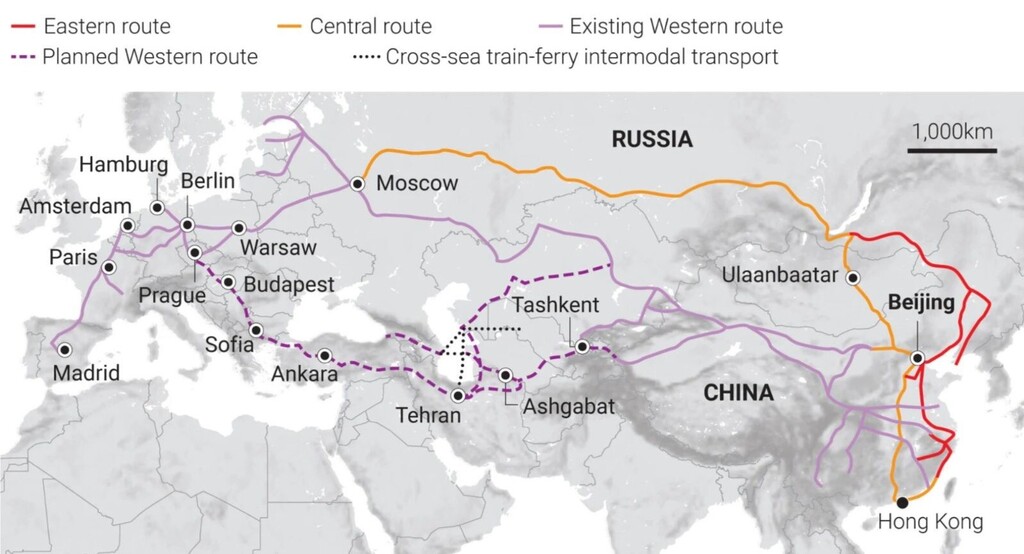
How long does rail freight take between Thailand and Finland?
Understanding the transit time between Thailand and Finland via rail freight isn’t straightforward because it’s affected by factors like the route, the speed of the train, and customs procedures, among others. On average, it takes about 15-20 days.
Next, let’s dive into some notable rail networks between China and Europe, outlining their typical transit times and departure frequencies. But remember, these are simply estimates. Due to various unpredictable factors, it’s a challenge to provide an exact transit time.
What are the advantages of rail transport between Thailand and Finland
Rail transport between Thailand and Finland presents a compelling balance between speed and cost. This method, more expedient than sea freight yet less costly than air transport, could be the decisive factor in your logistics strategy. Picture this: you’re shipping automotive parts from Bangkok to Helsinki. Sea freight might take over a month, while air freight’s high cost could impact your profits.
By contrast, rail freight smoothly traverses the Eurasian Land Bridge in roughly 15-20 days. Not only you’re saving time but also considerable shipping costs. Essentially, given the vast distance of about 7,630 kms, rail transport is the happy medium promising prompt delivery without breaking the bank. Remember, time saved equals opportunities gained and dollars saved enhances your bottom line.
How much does shipping goods by train between Thailand and Finland cost?
Identifying an exact cost for rail freight between Thailand and Finland isn’t a straight ticket. Like air and sea freight, multiple factors come into play – the nature of goods, total weight, transit times, and more. But fret not! Our expert team tailors quotes to bag you the best rates, navigating this intricate maze for you. Reckon rail is your route? Contact us and receive a free quote within 24 hours. We’re here to turn a complex process into child’s play. Let’s get moving!

Door to door between Thailand and Finland
Navigating the world of international shipping? Enter Door to Door shipping, your convenient bridge between Thailand and Finland. This all-inclusive service handles everything from pick-up at the origin to delivery at the final destination, simplifying logistics and potentially saving you time and money. Sounds convenient, doesn’t it? Let’s dive in to find out more!
Overview – Door to Door
Wondering how to ease your Thailand-Finland shipment woes? Door-to-Door shipping might be your perfect logistics solution. With comprehensive coverage from pick-up to final delivery, you evade arduous paperwork, customs clearance hiccups, and transit mishaps. DocShipper clientele attest to its approachability and dependability. Worth noting, it may pinch your pocket more than port-to-port shipping and there could be slight delays due to stringent customs procedures. But if hassle-free, smooth shipments are your aim, then this stress-reliever is definitely worth considering.
Why should I use a Door to Door service between Thailand and Finland?
Ever tried herding elephants in Bangkok just to ship a crate of Thai silk to Helsinki? No more! Door to Door service between Thailand and Finland can be a real game-changer for you. Here are five reasons why:
1. Stress-Free Logistics: No more juggling between multiple carriers, customs, and paperwork. This service handles it all, from the gritty details to the big picture, letting you sit back and focus on what you do best – your business.
2. Timely Deliveries: Have an urgent consignment? With Door to Door service, you call the shots. The structured system ensures tight deadlines are met, never letting your goods be a ‘late bloomer’ at their Finnish destination.
3. Specialized Care: Got complex cargo? Don’t fret it, forget it! Your cargo enjoys the VIP treatment it deserves, with specialized handling to ensure it arrives safe and sound.
4. Convenience: If you think handling trucking is quite a ‘pickle’, Door to Door service is your answer. It covers transport from the initial pickup to the final delivery point.
5. Versatility: Whether it’s via the bustling Bay of Bengal or the popular ‘Silk Road’, Door to Door service gives you flexibility in transport methods, be it sea, air, rail, or road.
Remember, when it comes to shipping goods from Thailand to Finland – easy does it. And nothing’s easier than Door to Door service.
DocShipper – Door to Door specialist between Thailand and Finland
Experience stress-free door-to-door shipping between Thailand and Finland, handled from A to Z by the proficient team at DocShipper. Whether it’s packing, transportation, or navigating through customs, we’ve got it all covered across all shipping methods. Plus, to make it truly seamless, you’ll receive a dedicated Account Executive to answer your every query. Reach out now for a free estimate within the next 24 hours, or consult with our freight-savvy advisors for free! With us, you can sit back and relax as we oversee the details of your international freight needs.

Customs clearance in Finland for goods imported from Thailand
Customs clearance is the process your shipment undergoes before it can enter or leave a country. This often complex task involves navigating regulations, duties, taxes, and licenses, all of which vary per item and country. Missteps could result in unexpected fees or even your goods held up in customs. Understanding the process when importing goods to Finland from Thailand is crucial.
Over the following sections, we’ll deep-dive into these areas, helping you avoid potential pitfalls. Don’t worry, DocShipper is at your service to ensure smooth sailing. All types of goods, all corners of the globe, we’ve got you covered. Simply provide the origin, goods value, and HS Code for your project to start with, and we’ll handle the rest. Don’t hesitate to reach out if you have any inquiries or wish to get an estimate. Your shipping success is our mission.
How to calculate duties & taxes when importing from Thailand to Finland?
Understanding the cost of importing goods from Thailand to Finland hinges on several key details. Firstly, you’ll need to identify the exact country where your goods were produced or manufactured. Then, determine the Harmonized System Code, or HS Code, which is a unique international code for your type of product. You’ll also need to calculate the Customs Value – which is generally the cost, insurance, and freight (CIF) price of the products.
Next, take into account the Applicable Tariff Rate, which can fluctuate and is set by the destination country Finnish customs authorities. Remember, this isn’t a set value across all products and will vary greatly depending on the product category under the HS code system. Finally, keep in mind any additional taxes and fees that may apply, such as Value Added Tax (VAT), excise duties, and possibly others depending on the nature of your products.
So, start by identifying the country of origin, because this crucial information sets the stage for the entire customs process and influences every subsequent calculation. Having this knowledge will enable a smoother clearance process and more accurate financial forecasting for your business.
Step 1 – Identify the Country of Origin
Identifying the country of origin is crucial for five main reasons. First, it sets the foundation upon which everything else rests; get this wrong, and your shipment might be delayed or refused. Second, it impacts your Import Tariff Classification (or HS code). Third, it’s vital in understanding potential trade agreements between Thailand and Finland. Finland, being part of the EU, has several arrangements with various Asian countries, potentially reducing customs duties.
Fourth, it helps you assess any potential import restrictions. Certain goods might be prohibited based on origin. Finally, figuring out where your products originate can help you calculate the exact duties and taxes you’ll pay, ensuring there are no nasty surprises down the line.
Consider this; if there’s a Free Trade Agreement in place, customs duties may be considerably reduced, sometimes to zero! However, specifics matter. Study the agreement’s details to see how it applies to your goods. Be mindful of Finland’s import restrictions, adjusting your shipment to comply with these.
Remember, clear, accurate information is your best ally in addressing duties and taxes when importing from Thailand to Finland.
Step 2 – Find the HS Code of your product
When it comes to shipping goods internationally, one term you will certainly come across is the Harmonized System (HS) Code. Simply put, the HS Code is a standardized numerical method of classification used by customs authorities globally. This code is essential for determining the amount of duties or taxes to be paid when you’re importing or exporting goods.
Now, how can you acquire this HS Code for your products? Most often, you can obtain this from your supplier. Those who engage in import/export regularly are well-acquainted with these codes and should be able to provide it to you promptly.
Should your supplier be unable to provide the HS Code, don’t fret. We’re here to walk you through the process of locating it yourself. Your first move is to use an HS Code lookup tool. We recommend the Harmonized Tariff Schedule. Once you’re on the site, simply type the name of your product into the search bar.
Next, check the Heading/Subheading column in the search result to locate the HS code.
A crucial note to bear in mind is the significance of accuracy when identifying the HS Code. Inputting an incorrect code could potentially lead to shipping delays, customs complications, and could even incur fines. It is, therefore, paramount to ensure the code you utilize is the correct corresponding code.
Here’s an infographic showing you how to read an HS code.

Step 3 – Calculate the Customs Value
Stumped by the term ‘Customs Value’ when importing goods from Thailand to Finland? Think of it as the complete cost that brings your product to your doorstep, not just the price tag you paid to purchase it. This amount, known as the ‘CIF’ value, tallies up your product’s cost, insurance fees, and international shipping charges. For instance, imagine you’re importing a batch of Thai silk scarves valued at $1,000. Adding an insurance of $50 and international shipping costs of $200, your total customs value would be $1,250. Remember, overlooking any of these elements can result in underestimating your total taxable amount, causing unwanted surprises. Get it right, and customs clearance becomes a breeze!
Step 4 – Figure out the applicable Import Tariff
An import tariff is a tax imposed by a country’s customs authority on goods imported from a foreign country. It’s calculated based on the product’s Harmonized System (HS) code, trade value, and other factors. For Finland, being a part of the European Union, the common union-wide import tariff applies.
To determine the applicable tariff for your imported goods from Thailand, you can use the TARIC System – European Customs. Here’s how:
1. Input the HS code for the product you’re importing. Let’s say you’re importing rubber gloves, which have an HS code of 401519. 2. Enter Thailand as the country of origin.
This tool will then provide you the tariff details applicable to your product.
For example, if the system shows that the tariff for rubber gloves (HS code 401519) from Thailand is 3.7%, and the Cost, Insurance, and Freight (CIF) costs are USD 20,000, the import tariff would be calculated as follows:
Import duties = CIF value Import tariff rate = $20,000 3.7% = $740
Thus, the import duties would amount to $740. Understanding the import tariff before shipping can assure a smoother delivery process and help avoid unexpected expenses.
Step 5 – Consider other Import Duties and Taxes
Beyond the basic customs tariff, additional import duties might affect your bottom line when bringing goods from Thailand to Finland. Some products are subject to excise duties, especially luxury goods, alcohol, or tobacco. Suppose you import high-end watches – a $500 watch might attract an excise duty rate (added to the basic tariff), inflating your cost.
Anti-dumping duties are another consideration, designed to protect local industry from imported goods sold below their normal value. For instance, if you’re importing rice from Thailand at an extremely low cost that undercuts the Finnish market, you could be hit with these extra duties.
The real kicker, though, is the Value Added Tax (VAT). In Finland, the standard VAT rate is 24% applied to the customs value plus any duties payable. So let’s say the customs value of your shipment is $10,000; you’ll pay $2,400 in VAT alone.
Remember, these are just examples; actual rates and circumstances may vary. Therefore, it’s crucial to understand these additional duties and factor them into your costs to maintain profitability. Exploring every possible financial implication will simplify your import process and safeguard your operation from unforeseen expenses.
Step 6 – Calculate the Customs Duties
When shipping from Thailand to Finland, your goods’ customs duties are calculated through a simple yet precise formula. It considers the customs value (goods’ Value + Shipping Cost + Insurance), VAT, if applicable, along with anti-dumping taxes, and Excise Duty, when relevant.
For example, suppose you have goods valued at $2000, with a shipping and insurance cost of $500. Your customs duty, let’s say at a rate of 5%, would be $(2000+500)5/100 = $125. Here, there are no VAT charges.
In another scenario, if the goods have the same customs value and with Finland’s VAT at 24%, the customs duties will be $125 and VAT would be $(2000+500+125)24/100 = $631.
Lastly, consider an instance where your goods attract an anti-dumping tax of 10% and an Excise Duty of 15%. Your customs duties remain the same at $125, VAT at $631, while the anti-dumping tax would be $(2000+500)10/100= $250 and Excise Duty calculated on $(2000+500+125+631) 15/100 = $482.08.
Calculating customs duties can be complex, that’s where we, DocShipper, come in. With our global network and years of expertise, we ensure your customs clearance is seamless, reducing overheads and eliminating potential penalties. Don’t get caught up in the calculations, let us handle them. Contact us for a free, no-obligation quote within 24 hours. We’re here to streamline your freight forwarding process, everywhere, every time.
Does DocShipper charge customs fees?
It’s common to be concerned about hidden costs in shipping. At DocShipper, we’re committed to transparent pricing. Our customs fees only cover the process of getting clearance for your goods; obligations charged by the government are a different story. They’re beyond us and go straight to the government’s coffers. Not convinced? We’ll give you the proof. We provide the documents produced by customs authorities, so you know that every charge is genuine, and you’re only footing the bill you’re supposed to. No surprise fees, no hidden costs. Just clear, upfront pricing. That’s the DocShipper promise.
Contact Details for Customs Authorities
Thailand Customs

Official name: Customs Department of The Kingdom of Thailand Official website: www.customs.go.th/
Finland Customs

Official name: Finnish Customs (Tulli)
Official website: tulli.fi/en
Required documents for customs clearance
Untangling the tricky web of paperwork, we’ll delve into crucial documents like the Bill of Lading, Packing List, Certificate of Origin, and Documents of Conformity (CE standard). This guide unwraps the mystery, simplifying the customs process to get your shipment moving smoother and faster.
Bill of Lading
Navigating the ocean of paperwork involved in shipping from Thailand to Finland can be daunting. However, the Bill of Lading isn’t just another form. Think of it as your golden ticket, a document that authenticates the handover of goods from seller to buyer. When you have it electronic or through a telex release, you save time and paper while expediting the process – now that’s efficiency unleashed! But, what about air cargo? Your magic document here is the Airway Bill (AWB), akin to the Bill of Lading, which keeps your shipment legit in the skies. Remember, practical and organized paperwork is what keeps your goods and cargo sailing or flying smoothly across borders!
Packing List
Whether you’re shipping sparkling sapphires from Thailand or cold-resistant coats from Finland, a Packing List is your highway to a hassle-free customs experience. Act like a filmmaker- your Packing List should be a detailed script of your cargo, itemizing everything packed. Forget mystery boxes; customs officers despise surprises. A vivid Packing List, covering details like the description of goods, their weight, and dimensions, can expedite the clearance process.
Think of it as a passport for your freight, helping it whizz through both sea and air routes, akin to an express lane at the supermarket. Pro tip: Keep your packing list precise and accurate, because a discrepancy can turn your shipment into a customs detainee. An overlooked ‘antique wooden statue’ among your personal effects shipped from Thailand could potentially cost you unnecessary fines and delay in Finland customs.
Commercial Invoice
Crafting a seamless Commercial Invoice is key while shipping goods from Thailand to Finland. It essentially functions as a bill, capturing detailed data about your consignment such as the seller, buyer, description, and HS code of each item, including its value. Accuracy here paves a smooth path for your goods through customs.
Tip: Always ensure the description on the invoice aligns with the information on your Bill of Lading and Packing List.
For instance, misquoting a cotton t-shirt as a woolen one might trigger red flags at customs, leading to delays. A Commercial Invoice created with attention to detail helps to avoid such hitches, ensuring your shipment reaches the finish line in Finland without a hitch. Keep this in mind for faster, stress-free cross-border transactions.
Certificate of Origin
In international trade, the Certificate of Origin validates the ‘birthplace’ of your goods, essential when shipping between Thailand and Finland. For instance, if you’re exporting handcrafted teak furniture made in Thailand, your Certificate of Origin certifies it as authentically Thai. This certificate can open doors to beneficial duty rates under specific trade agreements, making your shipping costs more competitive.
Therefore, don’t forget to include the country of manufacture in your documentation. Doing it right makes all the difference – think of your Certificate of Origin as your product’s passport, making customs clearance smoother and potentially less costly. So, always keep an eye out for any preferential rates, because that bamboo lamp being sent to Helsinki might just be a ticket to savings.
Certificate of Conformity (CE standard)
When shipping goods from Thailand to Finland, a Certificate of Conformity (CoC) to CE standards is crucial. This certificate isn’t about quality assurance; rather, it’s a declaration that your products comply with the health, safety, and environmental standards set in the EEA. Businesses often confuse it with quality assurance, but it’s different.
For example, a toy manufacturer exporting to Finland must ensure that products are CE marked, indicating adherence to safety standards. If you’re accustomed to US standards, think of it like the combination of FDA and FCC regulations, but for Europe. A practical tip? Always have your paperwork ready; delay in customs can be costly. Remember, your goods’ journey to Finland will be smoother with the CE mark.
Your EORI number (Economic Operator Registration Identification)
For a smooth shipping experience between Thailand and Finland, securing an EORI number is essential. You might be wondering, Why is this so critical? Well, the EORI number serves as your unique identity when shipping goods within or to the EU, making it easier for customs to track your shipments. Imagine it as your passport in the sea of international trade. Don’t miss out on the ease it brings in making customs procedures more efficient and faster.
Any uncertainty about how to get one? It’s pretty straightforward – simply register with the national customs authority of any EU country. Remember, Finland is part of the EU, so an EORI is a necessity, not an option, when shipping goods there from Thailand. Let’s make your international shipping hassle-free.
Get Started with Siam Shipping
Prohibited and Restricted items when importing into Finland
Disheartened by constant customs roadblocks when importing to Finland? Avoiding restricted or prohibited goods is a key first step. Let’s get you over that hurdle and make your importing journey a lot more manageable.
Are there any trade agreements between Thailand and Finland
Indeed, the Finland-Thailand trade relationship is fruitful, without a formal FTA. Yet, they both have Generalized Scheme of Preferences (GSP) status, providing reduced tariffs. Good news! They’re partaking in ongoing discussions under the EU-Thailand FTA initiative. When operational, your business may benefit from an increased flow of goods and potentially lower duties. Keep an eye on this changing landscape for advantageous opportunities!
Thailand – Finland trade and economic relationship
Historically, Thailand and Finland have maintained a steady trade alliance with fluctuations due to economic developments. Thailand has been of interest to Finland, largely due to its manufacturing prowess. Thai exports, mostly in electronics, fruit, canned fish, and computers, have found a sizeable market in Finland.
On the other hand, Finland’s advanced tech industry exports, especially telecommunications equipment and machinery, have been in high demand in Thailand. Trade volume between the two nations reached over €300 million in 2019 alone. Investments, too, run deep with Finnish companies showing active interest in Thailand’s numerous sectors, including shipping, healthcare, and clean tech. The mutual economic relationship promises to sustain and diversify, brightening future trade possibilities.
Your first steps with Siam Shipping
Additional logistics services
Warehousing
If you're shipping perishable goods between Thailand and Finland, reliable warehousing services are key. Don't underestimate the impact proper temperature-controlled storage can have on your goods' quality. Ensure seamless storage, without hiccups, on our dedicated page: Warehousing.
Packing
Ensuring your goods reach Finland from Thailand safe and sound hinges on careful packaging. You'll need a reliable partner who can tackle diverse products, from fragility of electronics to bulkiness of furniture. Ever had a shipment returned due to improper packing? We've got you covered. Skip the guesswork, trust our packaging expertise. More info on our dedicated page: Freight packaging.

Transport Insurance
Unlike fire insurance, cargo insurance has you covered while your goods are on the move, guarding against mishaps like damage or loss. Picture sending a batch of Thai silk to unleash Scandinavian style, but it ends up water-damaged - Cargo Insurance saves the day! Don't just fight the fire, prevent it! More info on our dedicated page: Cargo Insurance.
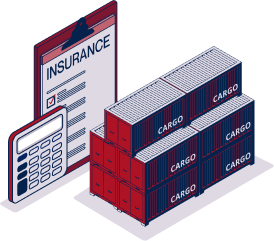
Household goods shipping
Moving personal belongings from Thailand to Finland? You're in good hands. Whether it's a fragile antique vase or a bulky piece of furniture, we'll care for it with the same flexibility and professionalism as if it were our own. Remember that time we carefully crated that grand piano? It's your turn now! More info on our dedicated page: Shipping Personal Belongings.
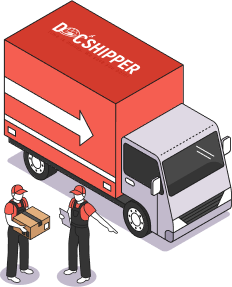
Procurement in Thailand
Facing the daunting task of sourcing and manufacturing products in unfamiliar regions like Asia and East Europe? Not to worry. At DocShipper, we remove language barriers and demystify the procurement process. We unearth the right suppliers, ensuring you never stray from your production timeline. Learn how we make the complex simple at our dedicated page: Sourcing services.

Quality Control
Shipping from Thailand to Finland means quality matters. Imagine, a batch of your specially crafted wooden furniture contains termite traces - a disaster waiting in Helsinki! Our Quality Control service isn't an option; it's essential. It ensures your products meet not only your standards but Finnish import regulations too. See how we shield you from pitfalls with our Quality Control service on our dedicated page: Quality Inspection.
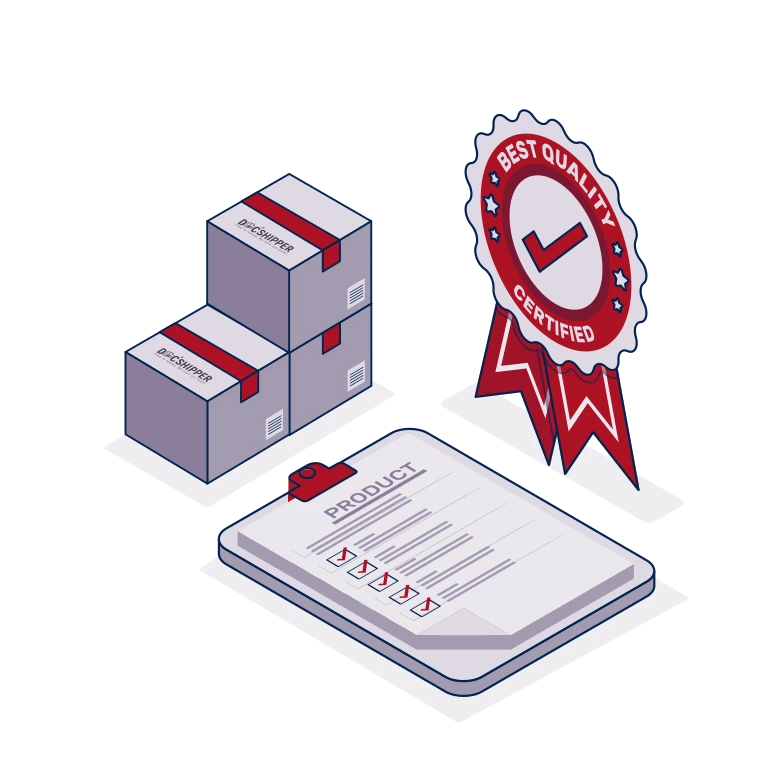
Conformité des produits aux normes
Shipping across borders? Ensuring your product meets all requisite regulations can be a puzzle. Thank goodness for our Product Compliance Services! We conduct stringent laboratory tests to secure necessary certifications, so you're all set to sail smoothly, sans regulatory woes. Real-life example - Imagine dispatching educational toys without legally-required safety clearances. Result? Delays and drama. Avoid such shipwrecks. More info on our dedicated page: Product Compliance Services.





